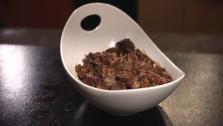Making Homemade Yogurt Is Easy With a Good Yogurt Starter

Are you already making your own yogurt at home? If not, why not?! Although it will often end up cheaper than store brought product, the primary reason for making yogurt at home for most people isn’t the price, it’s the ingredients. The only things that go into the yogurt that you, and your household, eats will be exactly what you put into it.
How Do You Make Yogurt At Home?
Although yogurt can be made using any insulated container, most people use an inexpensive yoghurt maker, which just makes the whole process so much simpler. https://en.wikipedia.org/wiki/Yogurt#Homemade
Yoghurt is basically made by heating milk then adding a bacteria culture and allowing it to set for up to 12 hours. Although the cultures used are Lactobacillus delbrueckii subsp. bulgaricus and Streptococcus thermophilus bacteria. Other bacteria that help promote healthy gut function such as lactobacilli and bifidobacterial may also be added.
For the majority of people, you’re going to be looking at using a yogurt starter culture, a milk product (dairy or non-dairy), whatever additional flavoring you might like and a yogurt maker.
Looking for yogurt substitutes? Read this post for more information.
What Is A Yogurt Starter?
A starter is simply a fermented product with the appropriate bacteria that helps create your delicious yogurt. Although you can make your own, it still requires the bacteria and quite exacting conditions, so generally most people will purchase their starters. There are a range of starters on the market, each has different properties and ingredients, so you may want to buy several and work on a trial and error to see which you prefer. Alternatively, you can look at the detailed reviews from somewhere like Yogurt Nerd and get a better indication of which starter will suit you.
Are All Starters Dairy?
Absolutely not! Although, yes, a large number of the available starters are formed from lactose based product, you can still find a good range of dairy free alternatives. Many starters are simply the lactic bacteria and a maltodextrin, so as long as the starter states that it is vegan and/or dairy-free you should be good to start making yogurt.
Do Starters Contain Sugar?
Although starters don’t usually contain raw sugar, they will often contain a maltodextrin base which is a complex carbohydrate with a high glycemic index. It is this high GI that helps yogurt work through your body so well.
Why Choose Probiotic Yogurt?
The term ‘probiotic’ has gained so much popularity in the last few years that you may actually be forgiven for not realizing you could still get yoghurt that didn’t have these cultures. However, some of the heat treatment processes, or just economy, means that not all yogurts contain an amount of probiotic cultures to be of any use to your digestive system.
One of the reasons that yogurt has become so popular is the way in which probiotics help aid the human digestive system. Promoting healthy microflora in your gut, probiotics cannot just help ease a sore tummy after over eating but can help ease symptoms of constipation or diarrhea.
As well as promoting a healthy gut, yogurt is also high in calcium which helps promote strong bones and wards off osteoporosis; potassium, which helps create an even balance of fluids and electrolytes in the body; and folate, which is essential for pregnant women as it has been showing to decrease the risk of spinal birth defects but also used in the body to help iron absorption.
What About Flavor?
One of the joys of making your own yogurt is that you can make it whatever flavor you like. Even more so, if you make one batch of plain, you can then flavor each bowl to your exacting taste. If you want chocolate yogurt that morning, no problem, just add sweetened cocoa; someone else wants honey & blueberry, they can just add those and mix together to create their own personalized blend.
How Long Does Culture Last?
Two of the terms that you will likely see in conversations around yogurt culture are “direct set” and “heirloom”. Direct set is the term for the commercially available direct culture that is normally purchased. It’s easy to use, simply adding to milk, water or milk substitute, set then eat. Whereas heirloom refers to using actual yogurt as a starter culture. The flavor of an heirloom yogurt can often be more tart than its original and not all yogurts are suitable be become heirloom cultures, however you can also purchase products that are specifically designed to be used as heirloom cultures and will create several generations of yogurt.
A general rule of thumb is use an heirloom culture within seven days of each batch of yoghurt and with a direct set you simply need to look on the packet for the expiry date. You can, of course, look at using a direct set culture to create your first batch of yogurt and then attempt to recreate it using an heirloom culture method.
History of Heirloom Cultures
As the production of yogurt can be traced back to at least 5000BC it is hardly surprising that there is a traditional method of making yogurt that doesn’t require a store brought culture, with examples of yogurt found in Indian and Greek history, as well as throughout the Middle East. Scientists and historians can only speculate at the origin but strongly suspect that yogurt bacteria may actually have been plant based and either the milk was exposed to the plant bacteria or that the bacteria was on the udders when milk was gathered.
Category: Washington D.C.










Comments (1)
Trackback URL | Comments RSS Feed
Sites That Link to this Post